By: Jim Ramm, P.E., Vice President, U.S. Biofuels, EcoEngineers
Recently, the U.S. Environmental Protection Agency (EPA) has resumed approving in situ corn kernel fiber (CKF) pathways for generating D3 Renewable Identification Numbers (RINs) under the Renewable Fuel Standard (RFS-2). This is the first time since 2017 that such approvals have been granted based on publicly available methodologies. This decision follows EPA’s rejection of the American Fuel and Petrochemical Manufacturers’ (AFPM) petition to reduce the cellulosic mandate, thereby strengthening the D3 RIN market. Notably, the current price difference between D3 and D6 RINs (D3/D6 split) has surpassed $2.70 per RIN, underscoring the economic importance of this development.
The National Renewable Energy Laboratory (NREL) pioneered the first publicly available method for CKF pathways, issued in 2021 and later endorsed by the EPA in its 2022 guidance. In 2023, a second method, ASTM E3417-24, was introduced. This method combines the existing NREL method with a new technique for yeast glucan removal, utilizing a yeast-degrading enzyme. Approved laboratories, which already provide analytical services for state low carbon fuel standard (LCFS) CKF pathways and Internal Revenue Service (IRS) producer tax credits using proprietary methods, are also offering these publicly available methods to support D3 CKF pathways.
These analytical services have streamlined the implementation of D3 CKF pathways for ethanol producers. This analytical process involves pre- and post-conversion sampling across multiple fermentation batches, once every 500,000 gallons of CKF ethanol, to determine a CKF converted fraction. This pathway is advantageous for corn ethanol producers, as it allows them to produce ethanol with a very low carbon intensity (CI), optimizing their carbon credit portfolio, which includes RINs, carbon credits and IRS tax credits.
Adopting a CKF pathway offers additional benefits, such as in situ conversion of fiber already present in the corn kernel, increased corn oil recovery, higher protein feed, and overall improved plant performance. Producers who were generating 2-5% CKF ethanol volume for state LCFS programs and IRS tax credits can now produce approximately 1% CKF ethanol volume under the RFS program. This can be achieved using existing plant equipment and enzyme products, enabling ethanol plants to readily participate in lower-CI RIN, carbon credit and IRS tax credit programs.
It is anticipated that 2-5% of the overall ethanol produced by a facility implementing a CKF pathway may qualify for the IRS Section 45Z production tax credit for the 2025-27 tax years, pending further guidance. Ethanol producers are encouraged to identify an optimal enzyme strategy by conducting trials to determine CKF ethanol production using available laboratory services. Considering non-public methods for state LCFS CKF pathways and IRS tax credits, alongside the NREL and ASTM methods for the D3 CKF pathway, could provide additional advantages. Registering with the RFS Quality Assurance Plan (QAP) may also offer a competitive edge against Q-RINs from the renewable natural gas (RNG) industry.
Embracing a CKF strategy now will position organizations to develop strong production, compliance and marketing strategies, mitigating risks from volatile commodity markets, and enabling success in the growing low carbon economy.





